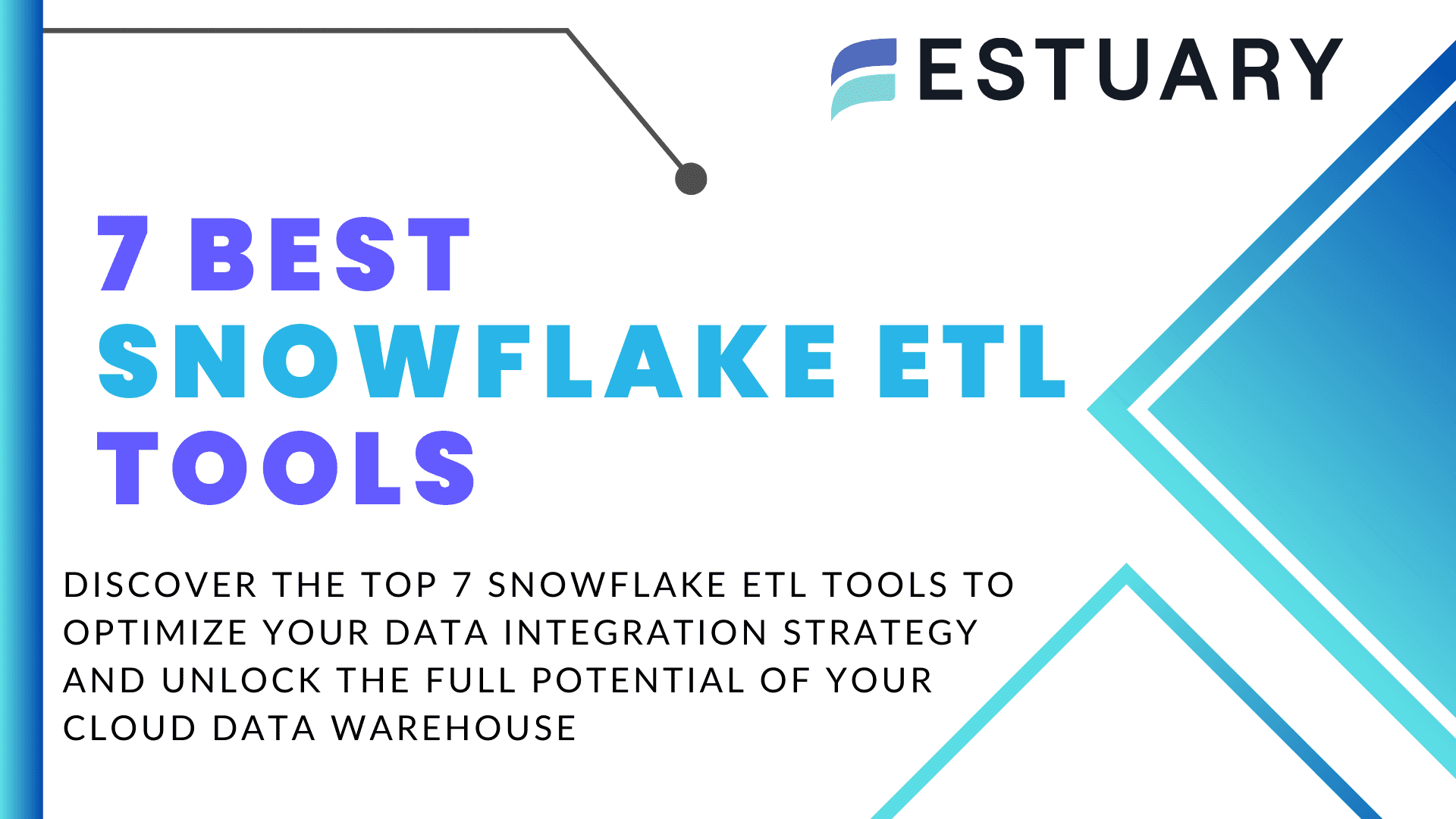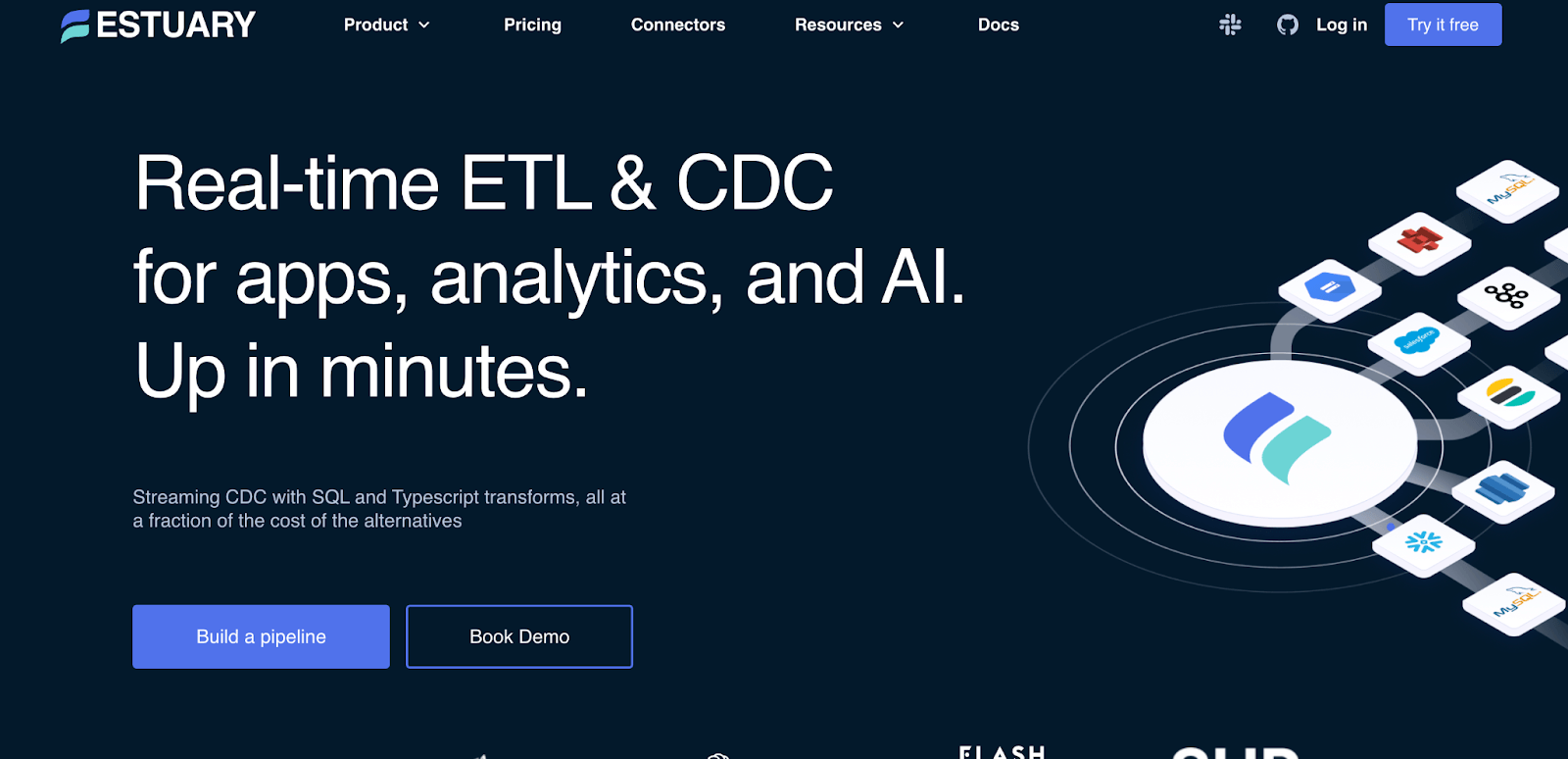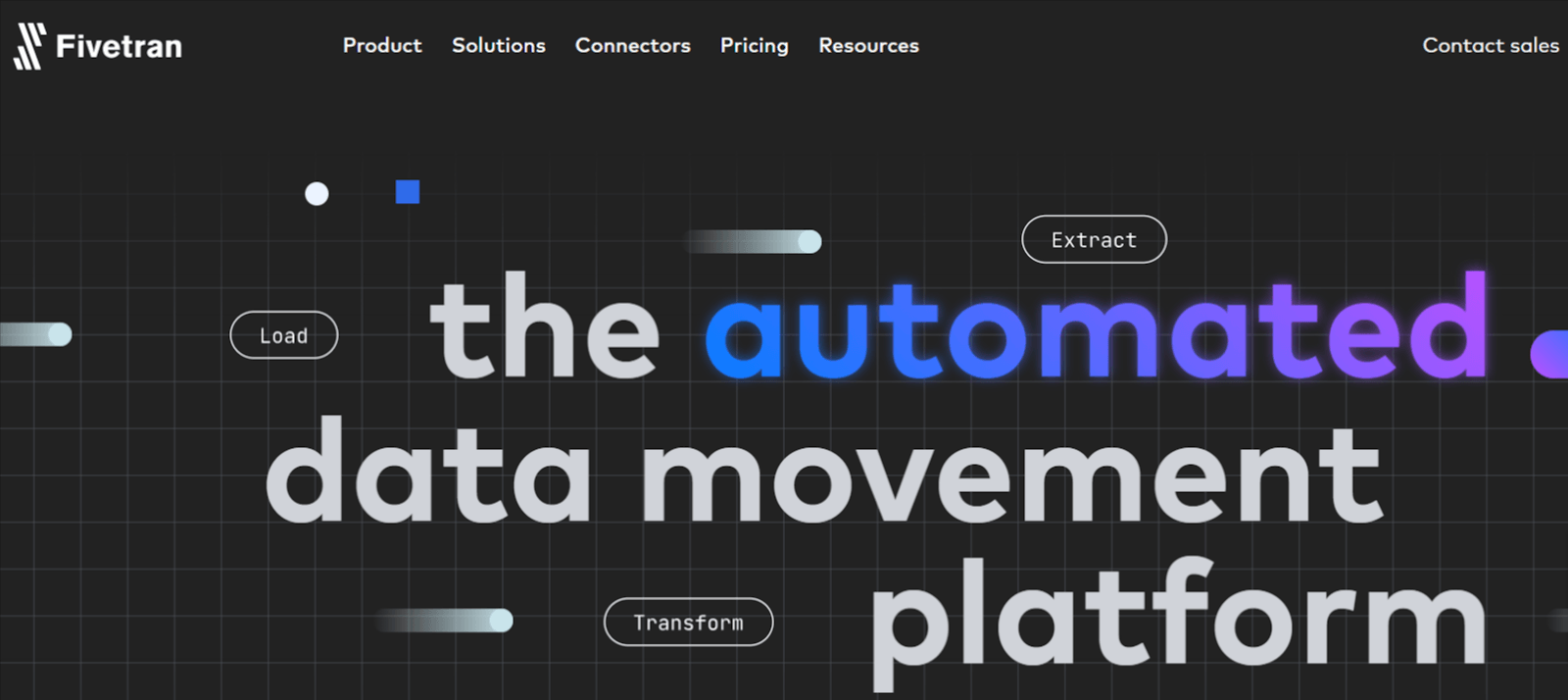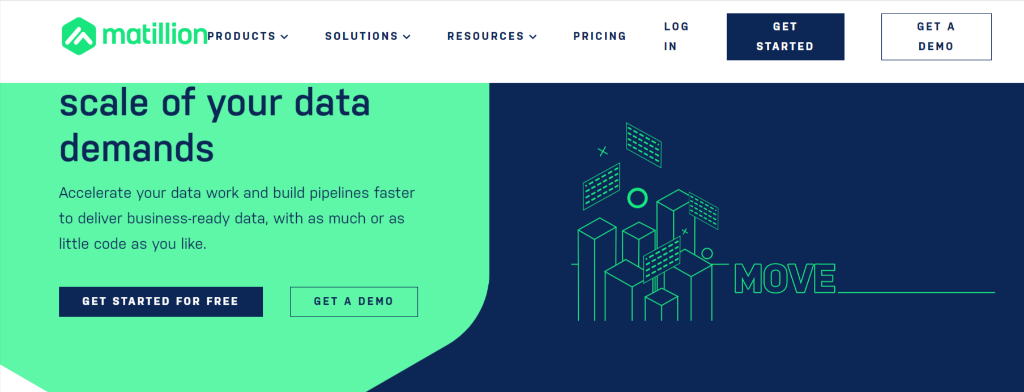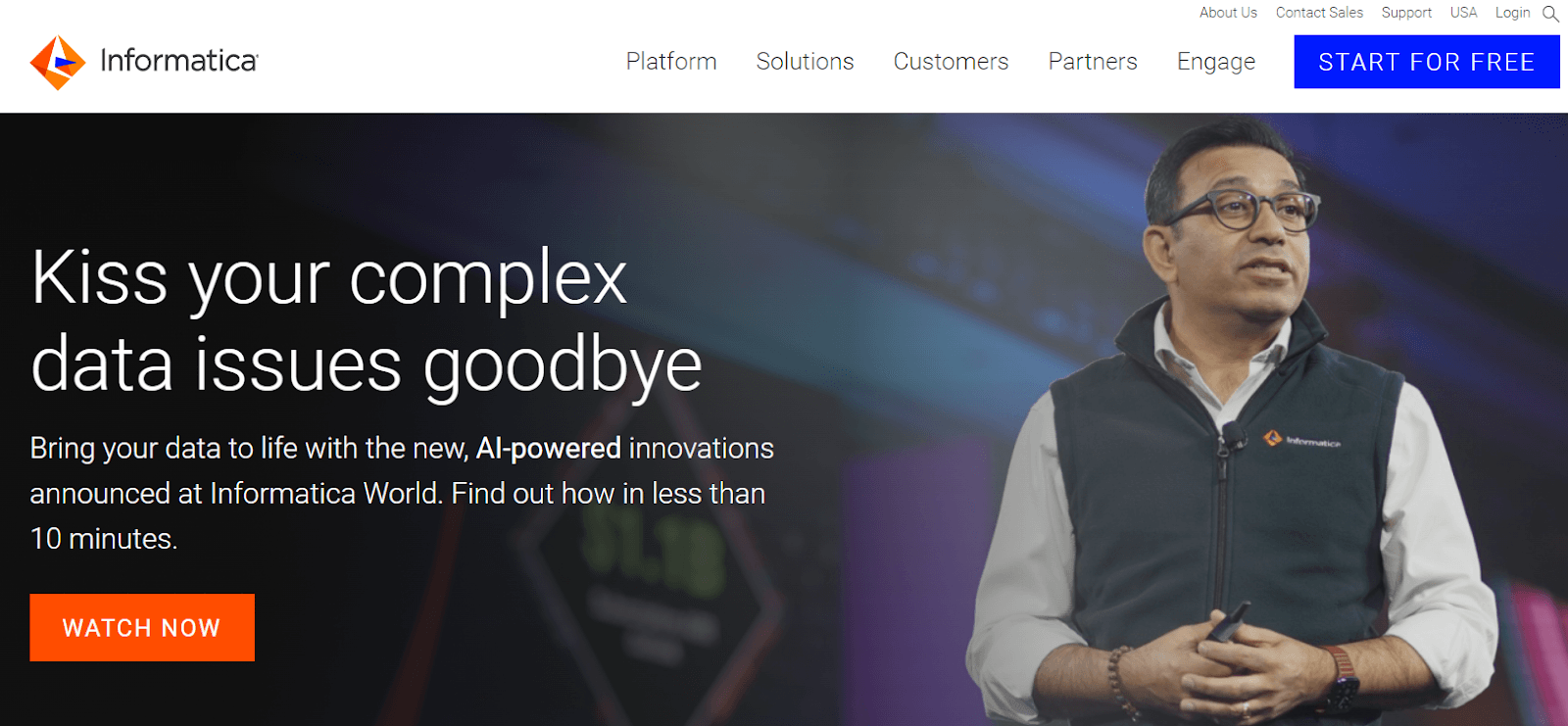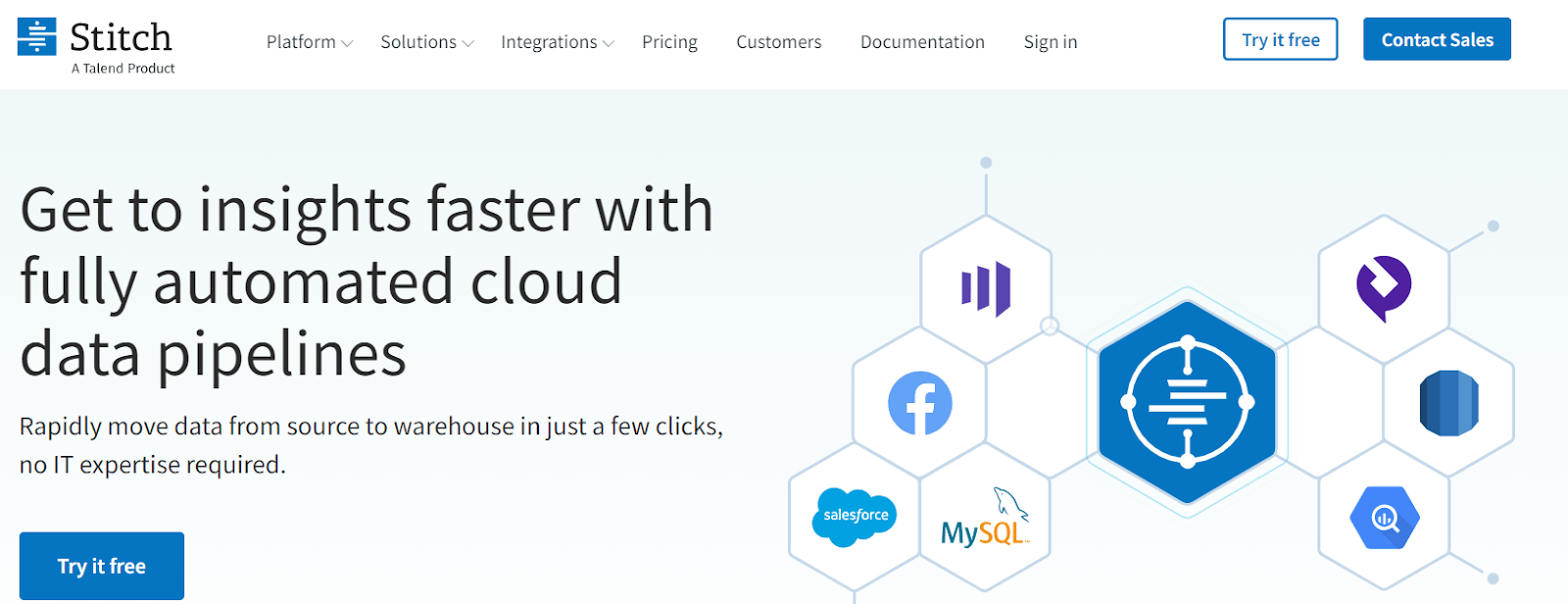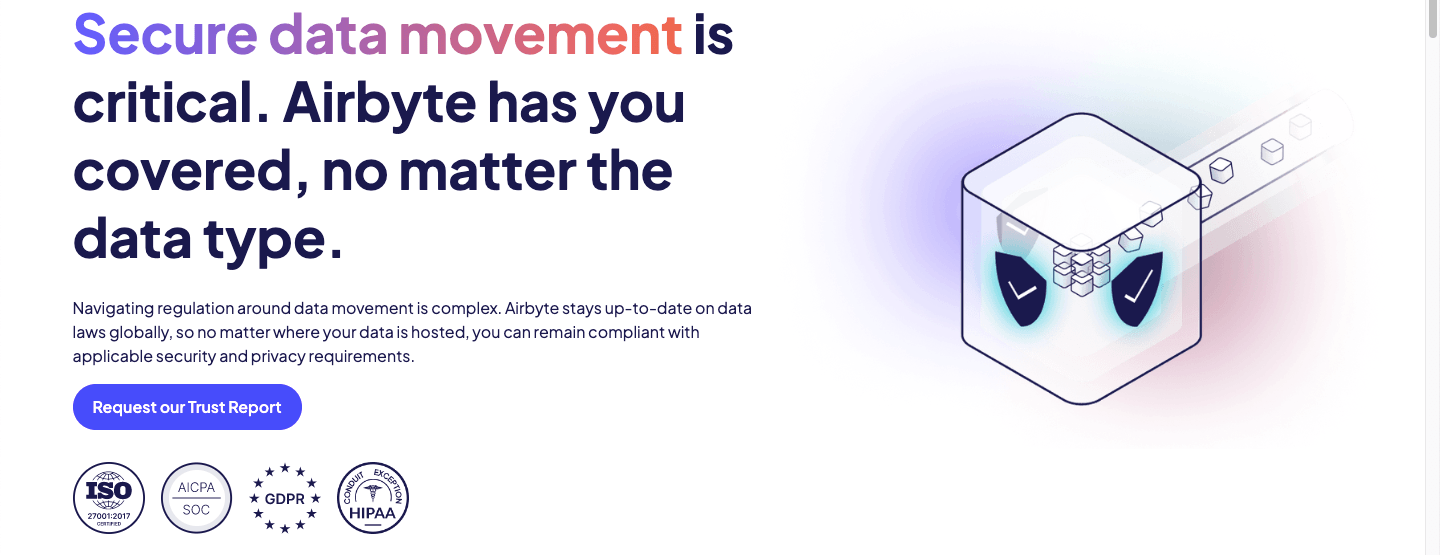
As data becomes a critical asset for organizations, are you fully harnessing the potential of Snowflake for your data integration needs? Snowflake, a leading cloud-based data warehouse, provides the scalability and performance to store and analyze massive datasets. However, the real key to maximizing this platform is the use of the right Snowflake ETL tools to streamline data ingestion, transformation, and loading processes.
Snowflake ETL tools are essential for:
- Extracting data from various sources.
- Transforming it into a format that Snowflake can efficiently utilize.
- Loading it into Snowflake’s cloud-based platform.
By automating these critical steps, Snowflake ETL tools not only streamline data workflows but also improve data quality, ensuring your organization can make informed, data-driven decisions. In this guide, we’ll explore the 7 best ETL tools for snowflake in 2024 covering their features, pros, cons, and pricing to help you choose the best solution.
What are Snowflake ETL Tools?
Snowflake ETL tools are specialized software solutions built to automate the process of extracting data from various sources, transforming it into a Snowflake-compatible format, and loading it into Snowflake's cloud data platform. These tools ensure seamless data integration from a variety of sources, such as databases, SaaS applications, and file stores, into Snowflake.
Key Benefits of Snowflake ETL Tools:
- Automation: These tools eliminate the need for manual data processing by automating the entire data pipeline—from extraction to loading. Automation not only saves time but also reduces the likelihood of human errors, resulting in more reliable and accurate data. This means less time spent on tedious tasks and more time focusing on analysis and decision-making.
- Scalability: One of the key advantages of Snowflake ETL tools is their ability to handle growing data volumes effortlessly. Whether you're managing data from a few sources or from hundreds of platforms, these tools can scale with your business needs, ensuring that performance remains consistent regardless of the data load. This scalability allows organizations to expand their data operations without worrying about performance bottlenecks.
- Data Quality: Snowflake ETL tools help maintain high data quality by applying transformation rules and validation checks. These tools can standardize data formats, cleanse it of errors, and ensure that the data entering Snowflake is reliable and consistent. Maintaining data integrity is crucial for producing meaningful insights and avoiding costly errors downstream.
- Accessibility: By loading data into Snowflake’s cloud data warehouse, these tools make your data readily available for analysis and reporting. This accessibility ensures that stakeholders can quickly access the data they need for timely decision-making. Additionally, the availability of real-time or near-real-time data enables more dynamic and responsive business operations.
Criteria for Selecting the Best Snowflake ETL Tools
When choosing the right Snowflake ETL tool, consider the following key factors:
- Ease of Use
Look for tools with user-friendly interfaces and intuitive designs that simplify the setup and management of data pipelines, ensuring efficient use by teams with varying technical expertise.
- Scalability
Assess the tool’s ability to handle increasing data volumes and support growing data needs without compromising performance. Scalable tools can adapt to your organization's evolving requirements.
- Pricing Structure
Choose tools with transparent pricing models that align with your budget, avoiding hidden costs or unexpected price increases as your data needs expand.
- Data Source Compatibility
Ensure the tool supports a wide range of data sources, including databases, SaaS applications, and file stores, allowing for versatile data integration into Snowflake.
- Customer Support
Opt for tools backed by reliable customer support and comprehensive documentation to ensure quick troubleshooting and optimal use of the tool's features.
By carefully evaluating these criteria, organizations can select the Snowflake ETL tool that best fits their specific needs, helping them achieve their data integration goals.
Top 7 Snowflake ETL Tools to Watch in 2024
Here are the best Snowflake ETL tools, let's dive into each one and explore their features.
1. Estuary Flow
Estuary Flow is a powerful, real-time ETL, ELT, and CDC platform built for efficient and scalable data integration. Its no-code interface allows users to create data pipelines in just minutes, simplifying the process of moving data between multiple sources and destinations. Estuary Flow’s flexibility makes it an ideal choice for businesses looking to integrate data into Snowflake, especially when they need to combine real-time data streams with batch processing for dynamic and complex workflows.
Key Features
- Real-Time & Batch Processing: Estuary Flow excels in integrating both real-time and batch data streams within a single pipeline, which makes it particularly well-suited for use cases involving Snowflake. By mixing real-time CDC and batch operations, users can move data into Snowflake seamlessly, ensuring low-latency access to fresh data alongside historical batch data.
- Flexible Transformation Options: Estuary Flow supports both ETL and ELT workflows. Users can perform real-time transformations using streaming SQL or TypeScript and leverage dbt for post-load transformations directly in Snowflake, ensuring maximum flexibility.
- Advanced Schema Evolution: As data schemas change, Estuary Flow automatically handles schema evolution, passing changes through to Snowflake without manual intervention, minimizing disruptions in the data pipeline.
- Multiple Destination Support: Unlike most ETL tools that limit you to one destination per pipeline, Estuary Flow allows simultaneous data loading into multiple destinations, including Snowflake. This capability is highly valuable for organizations managing multiple data warehouses or storage systems.
Pros
- Low Latency: With support for sub-100ms latency, Estuary Flow provides one of the fastest real-time integrations for Snowflake, ensuring timely access to fresh data.
- Scalable and Efficient: Estuary Flow offers a highly scalable solution, allowing businesses to handle massive volumes of data while maintaining excellent performance, particularly with incremental snapshots for efficient updates.
- ETL and ELT Flexibility: Combining both ETL and ELT options allows users to choose where and when transformations happen, giving flexibility in managing Snowflake data pipelines.
- Reliable CDC: Estuary’s exactly-once CDC ensures that data is captured without duplication, preserving the integrity of the data in Snowflake.
Cons
- Advanced Features Require Expertise: While Estuary Flow offers powerful features like real-time CDC and complex transformations, utilizing some of these advanced capabilities may require technical expertise, especially for customizing pipelines or handling large-scale, intricate data workflows.
Pricing
- Free Plan: Includes up to 2 connectors and 10 GB of data per month.
- Cloud Plan: Starts at $0.50 per GB of change data moved, plus $0.14 per hour per connector.
- Enterprise Pricing: Custom pricing tailored to larger organizational needs.
2. Fivetran
Fivetran is a widely recognized cloud-native ELT tool, praised for its ease of use and vast library of over 300 fully managed connectors along with 300+ lite (API) connectors. It simplifies data integration, automating the extraction and loading process with minimal configuration. Its ELT architecture enables seamless data flow into Snowflake, making it a popular choice for businesses looking to centralize data without heavy technical intervention.
Key Features
- Extensive Connector Library: Fivetran offers a broad range of connectors that cover databases, SaaS platforms, and APIs, providing seamless data integration.
- ELT Focus: The tool efficiently extracts and loads data, leaving transformations to be handled post-load, often within Snowflake or other data warehouses.
- Automated Schema Management: Fivetran automatically detects and adjusts for source schema changes, reducing manual intervention.
- Cloud-Native Architecture: Built for the cloud, it easily scales to handle growing data needs.
Pros
- Ease of Use: The interface is simple, allowing users to set up and manage data pipelines with minimal coding.
- Automation: Fivetran excels at automating data extraction and loading, saving significant time and resources.
- Connector Variety: The tool supports a wide array of connectors, reducing the need for custom integrations.
Cons
- Latency: Due to its batch-based Change Data Capture (CDC), Fivetran can introduce latency, making it less suitable for real-time data needs.
- Reliability Issues: Some users report occasional data load failures, which can disrupt workflows.
- Cost: Fivetran's Monthly Active Rows (MAR) pricing model can lead to unpredictable costs, particularly for organizations handling large or frequently updated datasets.
Pricing
- Fivetran’s pricing is based on MAR, which varies depending on how many active rows are processed monthly. Costs can increase significantly if you aim to reduce latency or handle large volumes of data.
3. Matillion
Matillion is a cloud-native ETL tool specifically designed for integrating data into cloud platforms like Snowflake, Amazon Redshift, and Google BigQuery. It combines powerful ETL capabilities with a user-friendly interface, enabling businesses to efficiently manage their data pipelines without needing on-premise infrastructure. Matillion’s ability to push down transformations to the target data warehouse makes it highly efficient, especially when dealing with large datasets.
Key Features
- Cloud-Native Architecture: Matillion operates entirely within cloud environments, eliminating the need for on-premise hardware and reducing management complexity. Its architecture is optimized for platforms like Snowflake, leveraging cloud scalability and performance.
- Flexible Transformation Options: It offers a range of transformation techniques, from drag-and-drop visual workflows to advanced coding options. This flexibility caters to both non-technical users and experienced data engineers.
- Pushdown Optimization: Matillion uses pushdown optimization, where transformations are offloaded to Snowflake or the target warehouse, optimizing performance by reducing the ETL tool’s overhead.
Pros
- Cloud-First Approach: Matillion is built for the cloud, making it highly scalable and performant without the hassle of managing on-premise infrastructure.
- Versatile Transformation Capabilities: The platform supports both visual and code-based transformations, allowing users to choose the approach that best fits their needs.
- Optimized Performance: By pushing down transformations to the target data warehouse, Matillion maximizes performance and resource efficiency.
Cons
- Limited Free Tier: Matillion’s free tier offers restricted features, limiting the ability to fully evaluate the tool before committing to a paid plan.
- Potential Vendor Lock-in: Due to its deep integration with specific cloud platforms, switching to a different data warehouse may require rebuilding data pipelines, which could increase switching costs.
Pricing
Matillion’s pricing starts at $1,000 per month for 500 credits, where each credit represents a virtual core hour. Additional costs may apply based on data volume and usage.
4. Informatica PowerCenter
Informatica PowerCenter is a powerful GUI-based data integration platform designed for complex enterprise-level environments. It offers robust capabilities for data integration, migration, and validation, making it ideal for organizations dealing with large datasets and diverse data sources. PowerCenter's ETL architecture enables seamless data extraction, transformation, and loading from multiple heterogeneous sources into platforms like Snowflake. Its additional solutions, such as data masking, data virtualization, and master data management, add extra layers of functionality to secure and manage data.
Key Features
- Advanced ETL Architecture: PowerCenter’s ETL process allows for smooth integration of data from a wide variety of sources, both on-premise and cloud-based, ensuring efficient data movement and transformation before loading into Snowflake or other target systems.
- Data Masking & Governance: Built-in data masking capabilities enhance security by anonymizing sensitive data, ensuring that privacy and compliance requirements are met across data pipelines.
- Pipeline Partitioning: The tool optimizes performance by enabling pipeline partitioning, which allows data to be processed in parallel, improving throughput and reducing overall processing time.
- Pushdown Optimization: It supports pushdown optimizations, where transformations are offloaded to the database or data warehouse (like Snowflake), maximizing performance by leveraging the processing power of the target system.
- Extensive Connectivity: Connects to a wide range of databases, applications, and data formats.
Pros
- Scalability for Big Data: PowerCenter seamlessly scales to handle growing data volumes, making it suitable for large enterprises with complex big data requirements.
- Debugging Tools: The integrated debugger helps identify and resolve failure points in data mappings, ensuring smoother data integration workflows.
- Geographically Distributed Teams: PowerCenter supports team collaboration by synchronizing geographically distributed members, ensuring seamless project management across different locations.
- Serverless Deployment: With serverless deployment options, the platform eliminates the need for manual infrastructure management, reducing operational overhead.
Cons
- High Cost: The pricing can be on the higher side, especially for smaller organizations, making it less accessible for businesses with budget constraints.
- Rigid Data Architecture: Adapting your data architecture to fit PowerCenter's design can require additional effort, particularly when dealing with legacy systems.
Pricing
PowerCenter offers flexible pricing starting from $2,000 per month, with custom pricing available depending on the scale of the deployment and the specific features required.
5. Talend
Talend is a versatile data integration and management platform offering solutions that cater to both basic and complex data workflows. It provides two primary products: Talend Data Fabric, a unified platform designed to ensure data reliability and accessibility, and Stitch, a fully managed data pipeline optimized for analytics. These solutions make it easy to centralize and manage data across multiple systems, including Snowflake.
Key Features
- Comprehensive Connectivity: Talend offers integration with more than 800 data sources, including databases, cloud services, and applications, providing a broad range of options to link various data systems directly into Snowflake or other data warehouses.
- ETL and ELT Workflows: Whether your project requires extracting, transforming, and loading data or handling transformations post-load within the warehouse, Talend provides seamless support for both ETL and ELT methods.
- User-Friendly Interface: Talend’s visual interface allows users to build complex data pipelines through drag-and-drop components, making the platform accessible to both developers and business users.
- Flexible Data Transformations: Talend allows a wide range of transformation options, from simple modifications to more advanced operations, with the ability to write custom scripts for highly specific data workflows.
Pros
- Scalable Pipelines: Talend can support both small projects and enterprise-level workflows, making it a flexible tool for building scalable data pipelines.
- Broad Integration Capabilities: With its extensive connector library, Talend simplifies the process of linking various data sources and applications, reducing time spent on manual integration efforts.
Cons
- Limited Features in Open Source: Talend Open Studio lacks certain advanced features available in the enterprise versions, particularly for handling Big Data and real-time processes.
- Time-Consuming for Complex Setups: Writing custom transformations or setting up intricate workflows can be labor-intensive, especially for large projects.
Pricing
Talend's pricing is flexible and varies depending on the product and user requirements, with specific quotes provided upon request. Talend Open Studio is available for free, though businesses requiring advanced capabilities will need to explore the paid enterprise versions.
6. Stitch
Stitch is a cloud-based ELT platform designed to simplify the process of moving data from various sources into cloud environments like Snowflake. Originally developed as part of the Singer open-source project within RJMetrics, Stitch later became an independent entity before being acquired by Talend in 2018. With its foundation in open-source technologies, Stitch provides users with flexibility in data integration while maintaining ease of use for managing batch pipelines.
Key Features
- Open-Source Flexibility: Built on the Singer framework, Stitch allows for broad compatibility with other platforms like Meltano, Airbyte, and Estuary. Users benefit from the ability to utilize Singer taps to extract data from a wide variety of sources.
- Batch ELT Processing: Stitch operates as a batch ELT tool, scheduling data replication at regular intervals (with a minimum interval of 30 minutes). This approach works well for organizations that don’t require real-time data updates but need reliable, periodic ingestion of data into Snowflake or other destinations.
- Extended Log Retention: Stitch offers up to 60 days of log retention, giving users ample time to review data pipeline activity and troubleshoot issues. However, some competitors, such as Estuary, offer longer retention or indefinite storage of logs.
Pros
- Open-Source Compatibility: Stitch’s reliance on the Singer framework enables users to take advantage of open-source connectors and taps, making it adaptable to a variety of data integration needs.
- User-Friendly Setup: Stitch is designed to be easy to use, with a straightforward setup process that minimizes technical overhead, making it ideal for organizations looking for a quick, no-fuss way to manage their data pipelines.
Cons
- No Real-Time Data Processing: Stitch is limited to batch processing, with no support for real-time data replication. The minimum batch interval of 30 minutes may not be suitable for businesses requiring immediate data synchronization.
- Limited Connector Support: Stitch currently offers around 140 connectors for data sources and 11 destinations, which is fewer than what is available from other data integration platforms, limiting flexibility for organizations with diverse data environments.
- Soft Deletes: Stitch supports only soft deletes, meaning that deleted data is not fully removed from the target system. This may require additional data management efforts within Snowflake or other data destinations to maintain data accuracy.
Pricing
Stitch offers tiered pricing plans:
- Basic Plan: $100 per month or $1,000 annually, allowing up to 3 million rows per month.
- Advanced Plan: $1,250 per month, supporting up to 100 million rows.
- Premium Plan: $2,500 per month, supporting up to 1 billion rows per month.
7. Airbyte
Airbyte is an open-source ELT platform that has rapidly gained attention since its founding in 2020. Originally built on the Singer framework, Airbyte has since evolved its connectors and architecture while maintaining compatibility with Singer taps for users who need them. In 2022, Airbyte launched its cloud service, providing a managed solution for organizations that want to streamline data integration processes without managing infrastructure. As a relatively new player, Airbyte has established itself as a strong option in the open-source ELT space, particularly for businesses looking to integrate data into cloud platforms like Snowflake.
Key Features
- Open-Source Foundation: Airbyte’s roots in open-source make it highly adaptable, offering flexibility to users who want to customize their data integration pipelines. It remains compatible with Singer taps, allowing users to leverage community-built connectors or create their own.
- Batch-Based ELT: Airbyte operates on a batch processing model, scheduling data movement at set intervals. Self-hosted users can configure batch intervals as short as 5 minutes, while Airbyte Cloud supports intervals of one hour or longer, making it better suited for non-real-time data replication needs.
Pros
- User-Friendly Interface: Airbyte is designed for ease of use, with a clean and intuitive user interface that simplifies setting up and managing data pipelines, making it accessible even for teams without deep technical expertise.
- Community Adoption: Despite its relatively recent entry into the market, Airbyte has seen widespread adoption, with thousands of organizations using its open-source version, demonstrating strong community support and frequent improvements.
Cons
- Limited Managed Connectors: While Airbyte offers over 300 connectors, only around 50 are actively managed and maintained by Airbyte itself. The remaining connectors come from open-source contributions, meaning they may not always receive regular updates or support.
- Batch Processing Delays: Airbyte’s reliance on batch processing can be limiting for companies that need frequent data updates. In Airbyte Cloud, the minimum interval between data loads is one hour, which may not meet the needs of businesses requiring more timely data replication in Snowflake.
- ELT-Only Model: Airbyte exclusively supports ELT, meaning that all data transformations must occur within the target warehouse, such as Snowflake. For teams looking to perform transformations outside of their data warehouse, Airbyte may not be a suitable choice.
- Limited Automation for DataOps: While Airbyte’s UI is user-friendly, it lacks automation features that can be critical for managing large-scale or complex pipelines. The platform offers limited support for automating schema evolution, testing, or managing end-to-end pipelines.
Pricing
Airbyte’s pricing is straightforward, starting at $10 per GB of data moved or $15 per million rows when moving data via API or custom sources. Discounts are available based on data volume, and the same rate applies to both incremental syncs and backfills, which can affect costs during initial data migrations.
Conclusion
Selecting the right Snowflake ETL tool is essential for any organization seeking to fully leverage its data. From Estuary Flow's real-time processing to Airbyte's open-source flexibility, each tool brings unique strengths to meet different business needs. When evaluating options, prioritize factors like ease of use, scalability, pricing, and data source compatibility to ensure the tool aligns with your organization's goals.
By integrating the most suitable ETL tool into your Snowflake environment, you can streamline data workflows, enhance data quality, and empower your team to make informed, data-driven decisions. Whether managing small-scale data streams or handling large enterprise datasets, the right ETL tool will help you navigate the ever-evolving data landscape and maintain a competitive edge.
Looking for a cost-effective, real-time solution? Try Estuary Flow for seamless data integration into Snowflake and experience its power firsthand. Start your 30 days free trial today and see how it can simplify your data operations.
Additional Related Tools Resources:

About the author
Rob has worked extensively in marketing and product marketing on database, data integration, API management, and application integration technologies at WS02, Firebolt, Imply, GridGain, Axway, Informatica, and TIBCO.
Popular Articles





